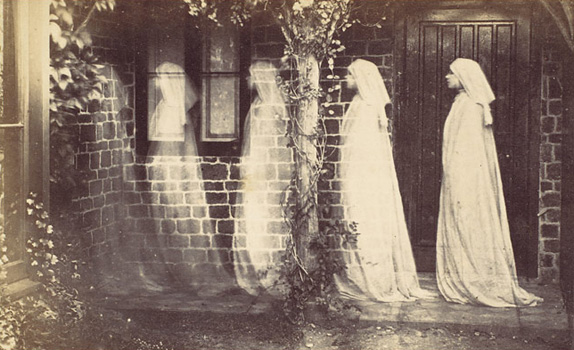Centuries ago,articles on genital eroticism a huge red spot on Jupiter vanished. But years later, a new one was born.
Today we know this conspicuous feature as the "Great Red Spot," a swirling storm wider thanEarth. Curiously, earlier astronomers, like Giovanni Domenico Cassini in 1665, also observed a colossal red storm at the same latitude on Jupiter — raising the possibility that they're actually the same storm.
In newly published research, however, astronomers sleuthed through historical drawings and early telescope observations of Jupiter to conclude that today's spot is indeed a separate storm from its predecessor, unfittingly known as the "Permanent Spot." It likely disappeared between the mid-18th and 19th centuries.
"What is certain is that no astronomer of the time reported any spot at that latitude for 118 years," Agustín Sánchez-Lavega, a planetary scientist at the University of the Basque Country in Spain, told Mashable.
SEE ALSO: NASA scientist viewed first Voyager images. What he saw gave him chills.Then, in 1831, astronomers started seeing a conspicuous red spot again. The new research, published in Geophysical Research Letters, concludes this latest spot is at least 190 years old.
That's one impressive storm. Not only has it been spinning counterclockwise for nearly two centuries, it packs winds reaching some 400 mph. Planetary scientists at NASA and elsewhere are working to understand what gives the space tempest its vibrant red hue.
Centuries-old documentation of the Permanent Spot also shows that it was much smaller than the Great Red Spot in the 19th century (and later), which means this earlier storm would have had to triple in size. But that's not something astronomers have ever witnessed in a storm on Jupiter, Sánchez-Lavega explained.
 The images a, b, and c show the "Permanent Spot" drawn by Italian astronomer Giovanni Domenico Cassini respectively in 1677, 1690, and 1691. The image d shows a view of the Great Red Spot in 2023. Credit: G. D. Cassini / Eric Sussenbach / AGU
The images a, b, and c show the "Permanent Spot" drawn by Italian astronomer Giovanni Domenico Cassini respectively in 1677, 1690, and 1691. The image d shows a view of the Great Red Spot in 2023. Credit: G. D. Cassini / Eric Sussenbach / AGU  a: A 1711 painting with Jupiter by Donato Creti showing the Permanent Spot. b: A drawing by the French artist E. L. Trouvelot in November 1880, showing the Great Red Spot. c: A drawing by T. G. Elger in November 1881 showing the Great Red Spot. Credit: Donato Creti / E. L. Trouvelot / T. G. Elger
a: A 1711 painting with Jupiter by Donato Creti showing the Permanent Spot. b: A drawing by the French artist E. L. Trouvelot in November 1880, showing the Great Red Spot. c: A drawing by T. G. Elger in November 1881 showing the Great Red Spot. Credit: Donato Creti / E. L. Trouvelot / T. G. Elger You might wonder how the Great Red Spot, so unique in color and size, came to be. You're not alone. To find out, the research team also ran computer simulations, based on the behavior of vortices (or storms) in the Jovian atmosphere. The most compelling result — that created a larger "proto-Great Red Spot" that would have shrunk into a more compact storm — was unstable wind and atmospheric disturbance in this region of Jupiter's atmosphere. Another leading candidate was the possibility of several storms merging, but that didn't produce something resembling the Great Red Spot.
For over 150 years, the Great Red Spot has continued to shrink. In 1879, when it appeared more sausage-like, it was some 24,200 miles (39,000 kilometers) across. Now it's 8,700 miles (14,000 kilometers) wide, which is about the size of its predecessor. The spot's next stages are uncertain.
 The Great Red Spot, as seen in April 2017, with Earth overlaid. Credit: NASA / JPL-Caltech / SwRI / MSSS / Christopher Go
The Great Red Spot, as seen in April 2017, with Earth overlaid. Credit: NASA / JPL-Caltech / SwRI / MSSS / Christopher Go "We do not know what the future of the [Great Red Spot] is," Sánchez-Lavega said. If it continues to contract, it could fragment apart. Or, he added, "It may reach a stable size and last for a long time."
One thing is certain: From our perch hundreds of millions of miles away, we'll be watching.
 Best Presidents' Day deal: Save $250 on Peloton Bike
Best Presidents' Day deal: Save $250 on Peloton Bike
 Paul Hornschemeier on ‘Life with Mr. Dangerous’ by Nicole Rudick
Paul Hornschemeier on ‘Life with Mr. Dangerous’ by Nicole Rudick
 Delivering Chinese; Self
Delivering Chinese; Self
 A Week in Culture: Tom Nissley, Writer and Game
A Week in Culture: Tom Nissley, Writer and Game
 SpaceX will try to achieve 2 impressive feats on Monday
SpaceX will try to achieve 2 impressive feats on Monday
 Stieg's Stockholm by Elisabeth Donnelly
Stieg's Stockholm by Elisabeth Donnelly
 Talking Dirty with Our Fall Issue by Sadie Stein
Talking Dirty with Our Fall Issue by Sadie Stein
 Staff Picks: ‘DOC,’ ‘Luminous Airplanes’ by The Paris Review
Staff Picks: ‘DOC,’ ‘Luminous Airplanes’ by The Paris Review
 Southern Gothic by Margaret Eby
Southern Gothic by Margaret Eby
 Come Celebrate Our Fall Issue by Deirdre Foley
Come Celebrate Our Fall Issue by Deirdre Foley
 Singing Cowgirl; Cigarette Boy by Chris Flynn
Singing Cowgirl; Cigarette Boy by Chris Flynn
 Wells Tower, DBC Pierre, and Tobias Wolff by Chris Flynn
Wells Tower, DBC Pierre, and Tobias Wolff by Chris Flynn
 Man City vs. Real Madrid 2025 livestream: Watch Champions League for free
Man City vs. Real Madrid 2025 livestream: Watch Champions League for free
 Cats, Dogs, Men, Women, Ninnies & Clowns by Roz Chast
Cats, Dogs, Men, Women, Ninnies & Clowns by Roz Chast
 James Salter Wins the 2010 Rea Award by The Paris Review
James Salter Wins the 2010 Rea Award by The Paris Review
 Writing Jobs; Literary Style Icons by Sadie Stein
Writing Jobs; Literary Style Icons by Sadie Stein
 Equestrian Summer Camp; Desolation Canyon Ranger by Chris Flynn
Equestrian Summer Camp; Desolation Canyon Ranger by Chris Flynn
Google and Facebook don't just dominate online ads—they're pushing everyone else out, tooiPhone 8 still manages to draw substantial crowd, despite the iPhone X that's comingiOS 11 is already on almost 15 percent of Apple devicesNew documentary exposes the increasing dependence we have on smartphones'Dungeons & Dragons' now has a KindleHere's how to hide iMessage apps in iOS 11In one day, we saw two very different sides of esportsFacebook to hand more than 3,000 Russian ads to CongressNetflix blesses us with 'Bojack Horseman' news via grovelling text messages'The Good Place': Why you should watchHere's 27.6 billion reasons why Facebook wants to regulate itselfYes, of course Justin Trudeau owns a pair of Chewbacca socksTorturing Sims is never not hilarious, as Reddit demonstrates'Game of Thrones' vet Bryan Cogman developing prequel seriesApple will bring back 3D Touch appThis dude is the only person who's truly celebrating Earth, Wind & Fire DayApple TV 4K review: A solid update that costs too muchPumpkin spice food spray is a thing, and we're not the least bit surprisedGoogle and Facebook don't just dominate online ads—they're pushing everyone else out, tooA close friend of Jake Gyllenhaal gave me crucial advice on how to become BFFs with him NYT mini crossword answers for May 12, 2025 Best Garmin deal: Save over $100 on Garmin Forerunner 955 NYT Strands hints, answers for May 5 Best robot vacuum deal: Eufy Omni C20 robot vacuum and mop at record Astronomers saw one galaxy impale another. The damage was an eye Hurricane Laura's impact lingered with nightmarish mosquito swarms Best iPad deal: Save $132 on Apple iPad (10th Gen) NYT Connections Sports Edition hints and answers for May 19: Tips to solve Connections #238 Best portable power station deal: Save $179.01 on the EcoFlow River 2 Max Ryzen 5 1600X vs. 1600: Which should you buy? Every MCU movie villain ranked, from "Iron Man" to "Thunderbolts*" Inside the Murky Process of Getting Games on Steam How to Squeeze the Most Out of Your iPhone's Battery How to Easily Make iPhone Ringtones Using Only iTunes The State of PC Gaming in 2016 AMD Radeon RX 550 + Intel Pentium G4560 Waymo data shows humans are terrible drivers compared to AI The cicadas aren't invading the U.S. SpaceX's Starlink will provide free satellite internet to families in Texas school district Best soundbar deal: Save $300 on the Sonos Arc
3.3909s , 10195.921875 kb
Copyright © 2025 Powered by 【articles on genital eroticism】,New Knowledge Information Network